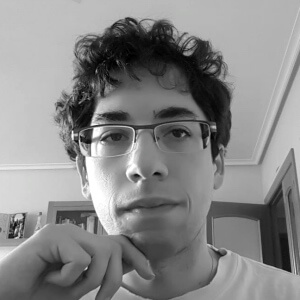Some Curious Facts About Cinema


Reviewed and approved by the psychologist Sergio De Dios González
Over the years, cinema has inspired and generated many fantastic stories and not only on the screen itself. For example, have you ever wondered where the habit of watching movies with popcorn came from? In fact, it was a custom adopted during the Great Depression in the United States. At this time, popcorn was one of the cheapest foods.
Cinema has generated many movies with the ability to bring people together. That’s because it’s both art and mass entertainment. As a matter of fact, it’s had a great impact on the mentality of the general public. Indeed, many people think of their own lives as movies.
Moreover, thanks to certain movies, today, we have a better idea of how the generations that preceded us used to live and the difficulties they encountered.
Cinema also allows us to travel to remote places and understand the unique customs of the people who inhabit them. And we all carry with us certain scenes from the movies that captivated us or from those in which we saw ourselves reflected. Therefore, in this article, we want to talk about some curious facts about cinema.
“A good wine is like a good movie: it lasts an instant and leaves a glorious flavor in your mouth; it is new in every sip and, as with movies, it is born and reborn in each taster.”
-Federico Fellini-

Cinema and psychology
Almost all the arts have links with psychology, and cinema is no exception. One example concerns a unique mental phenomenon. It’s called the Kuleshov effect in honor of the Russian director, Lev Kuleshov. He conducted an experiment regarding the curious reactions of the public when faced with certain images.
The experiment consisted in presenting identical frames of a famous actor named Ivan Mozzhukhin, in which he had a neutral expression. These were alternated with three other shots (a bowl of soup, a girl in a coffin, and a woman on a divan).
The audience believed the expression on the actor’s face was different in each frame, depending on whether he appeared to be ‘looking’ at the bowl of soup, the coffin, or the woman. They identified hunger, grief, or desire, respectively. This was excellent evidence that people project their own emotions onto movie figures.
Some curious facts about cinema
The movie industry has produced some truly bizarre movies. A good example is Cleo from 5 to 7 a movie that narrates, as its title suggests, only two hours in the life of the main character.
Another curious movie is Man with a Movie Camera, directed by Dziga Vertov. It’s a kind of documentary about life in the Soviet Union during the 1920s. It’s not a conventional depiction but mixes sizes, textures, and sounds. In fact, it portrays, not the reality of the facts, but a poetic perception of them.
Another strange gem is Dogtooth. This was a movie directed by Yorgos Lanthimos that tells a disturbing story. A couple and their three children live in an extremely unconventional way. In fact, they’ve never even left their house. Unsurprisingly, the children have a completely different idea of normality from that of their peers.

The cursed movies
There are several curious facts about cinema that involve ‘cursed movies’. Almost all of them are of the horror genre. They’ve gone down in history because either before, during, or after their filming, tragic events occurred. The most emblematic case was The Exorcist. Its recording had to be postponed due to a fire on the recording set. Furthermore, two of the actors died post-production.
The Omen, a 1976 movie, was also surrounded by dark coincidences. The most striking of these was that a flight chartered by the movie but changed at the last minute, later crashed, with no survivors. Also, the star, Gregory Peck took a flight that was struck by lightning and a few weeks later, the executive producer suffered a similar experience. In addition, the special effects artist suffered a car accident post-production in which one of his colleagues was decapitated.
Rosemary’s Baby is another movie worthy of being included in the list of cursed movies. It was filmed in the Dakota building. Legend has it that this building has tragic effects on those who enter it. Shortly after the movie’s release, the pregnant wife of the movie’s director, Roman Polanski, was murdered by the sect of Charles Manson. In addition, the composer of the soundtrack died of a brain hemorrhage. Years later, John Lennon was assassinated in front of the same building.
All cited sources were thoroughly reviewed by our team to ensure their quality, reliability, currency, and validity. The bibliography of this article was considered reliable and of academic or scientific accuracy.
- Lipovetsky, G., Serroy, J., & Moya, A. P. (2009). La pantalla global: cultura mediática y cine en la era hipermoderna (No. Sirsi) i9788433962904). Barcelona: Anagrama.
- Parias, S. B. (2014). Análisis semiótico del filme el Hombre de la Cámara de Dziga Vertov. Revista Vinculando.
- Powrie, P. (2011). Heterotopic Spaces and Nomadic Gazes in Varda: From” Cléo de 5 à 7″ to” Les Glaneurs et la glaneuse”. L’Esprit créateur, 51(1), 68-82.
- Urtado, M. B., dos Santos, R. C., & Fukusima, S. S. (2020). Efeito Kuleshov: a influência do contexto emocional no processamento de faces. Revista Psicologia em Pesquisa, 14(4), 120-139.
This text is provided for informational purposes only and does not replace consultation with a professional. If in doubt, consult your specialist.








